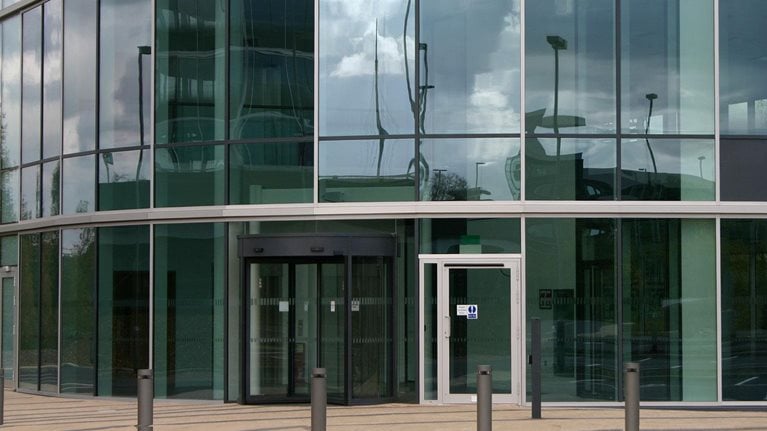The economic and health impacts of COVID-19 have stretched our social and physical infrastructure to the limit. Historically, infrastructure spending has proven to be a strong source of economic stimulus, but to have the desired and optimal effect, projects need to be carefully prioritized and timed.
We asked four industry leaders, representing diverse countries and regions, for their take on what infrastructure stimulus investments governments should consider in the near term as they plan for economic recovery. Below, Sir Danny Alexander, vice president and corporate secretary of the Asian Infrastructure Investment Bank; Sir John Armitt, chair of the UK National Infrastructure Commission; Makhtar Diop, vice president of infrastructure at World Bank; and Catherine McKenna, Canada’s minister of infrastructure and communities, share their perspectives.
Sir Danny Alexander
Infrastructure is the backbone of a healthy economy. Done right, infrastructure stimulus investments can not only hasten recovery from the effects of the COVID-19 pandemic but also accelerate progress in addressing the effects of climate change. Two types of such investments stand out: those that entice private-sector participation and those that put green infrastructure at the forefront.
As public-debt levels have increased dramatically through the COVID-19 crisis, it is important for governments to stretch stimulus dollars as far as possible. One way to do this is by deepening capital markets and developing incentives for the private sector to play a bigger role in infrastructure financing—for example, by creating an enabling environment for public–private partnership investment. Unless government guarantees and regulatory and institutional reforms are in place, the private sector is unlikely to participate. In addition to reducing the funding gap, deepening capital markets and mobilizing private-sector capital can enhance knowledge transfer, improve the quality of projects, and, importantly, mitigate risks—in terms of the structuring of project design and technical agreements, taxation, financing, and returns.
Furthermore, government stimulus programs can take this as an opportunity to direct public and private funding toward sustainable, resilient, green infrastructure—accelerating progress on shoring up infrastructure vulnerable to climate change. For instance, initiatives can aim to assess an issuer’s level of alignment with the objectives of the Paris Climate Agreement: climate-change mitigation, adaptation, and low-carbon transition. Aligned portfolios can deliver a potential financial impact by benefiting from any future repricing of climate-change risks—caused, for example, by hurricanes, droughts, and floods—and opportunities in the capital market. This arrangement would allow investors to systematically include in their investment portfolios both top-tier issuers, such as those that are already performing well on all three objectives, and second-tier issuers, which are those moving in the right direction. And in so doing, second-tier issuers would have an opportunity to transition to align with the objectives more fully, thus strengthening market capacity and growing the green agenda in a sustainable way.
While governments continue to stimulate infrastructure investments, there continues to be a multi-trillion-dollar financing gap due to the lack of bankable projects. Particularly in Asia–Pacific, demand far outweighs supply. The private sector will likely play a crucial role in filling these gaps, and multilateral banks should work together to help create a suitable enabling environment by working with governments to scale up operations, streamline procedures, and deepen capital markets.
Sir John Armitt
During the first months of the COVID-19 crisis, governments across the world reached for rapid-response plans to invest in infrastructure to help shore up their economies. Australia planned a series of fast-track projects worth A$3.9 billion ($2.7 billion).1 In the United Kingdom, we saw the launch of a £2 billion Green Homes Grant program to subsidize insulation and other energy-efficiency work in homes—and thereby support jobs.
Such steps are understandable and, in most cases, welcome. But governments have found there are not enough “shovel ready” projects to adequately stimulate economies during such a seismic shock. Still, economies run on confidence, and governments have a pivotal role to play in instilling this among investors. So, where do they start?
Committing to large infrastructure-delivery projects
The United Kingdom is unusual among large countries in that significant parts of key national infrastructure—including energy production and distribution, water, and digital communications—are privately owned and managed. In such a context, government can create the conditions for a market-led recovery by making firm commitments to large infrastructure-delivery projects in areas where the private sector is unlikely to move. These commitments send a strong signal about future opportunities.
Setting a clear strategic direction for infrastructure sectors
Beyond promises regarding spending, a clear strategy is the most important direction governments can offer. Clear objectives should help build consensus across political divides and ensure longevity, which, in turn, enables investors to orient their portfolios. And as such, the objectives should achieve shared goals, such as achieving net-zero emissions or, as in the United Kingdom, reducing regional productivity gaps.
The National Infrastructure Commission has previously called for a refreshed pipeline of price auctions to reach 65 percent renewable electricity sources by 2030, a significant investment in developing a firm evidence base for a decision on the future of the United Kingdom’s gas-heating network, and a boost to nationwide electric-vehicle charging infrastructure.2
Such policies mean nothing without a clear plan for delivery, but they are an essential starting point.

Voices on Infrastructure: Restarting economies with infrastructure investment
Makhtar Diop
As governments seek to foster economic recovery, they have a unique opportunity to shift the global economy’s trajectory toward a more sustainable path. Sustainable infrastructure can not only contribute to economic growth and job creation but also provide social and environmental benefits.
Specifically, as they prepare their infrastructure investment packages, governments can focus on three areas: energy, transport, and digital infrastructure. In energy, the most promising investments are those supporting cleaner energy solutions while encouraging the transition from fossil fuels. Renewable energy and battery-storage solutions are increasingly able to provide cost-effective energy, and the cost of pursuing these solutions has fallen dramatically in recent years, making them attractive options in today’s fiscally constrained environment. There is also enormous untapped potential in energy efficiency at low or negative cost if behavioral barriers are addressed. Furthermore, rural solar electrification is the cleanest and most cost-effective way to reach low-income households in remote areas. In this time of crisis, solar electrification can help save lives by keeping lights on, accommodating heating and cooling systems, and powering health facilities in those areas.
In transport, investments focused on projects that shift traffic toward cleaner transport modes—such as buses, railways, and waterways—can reduce carbon intensity. The shift toward sustainable mobility can begin immediately with comprehensive tax and subsidy reforms on fuels and vehicles that distort consumer choices, as well as with coordinated planning to improve the availability of low-carbon modes. Investments aimed at improving public transport are also critical, particularly in this time of crisis, as they can help low-income communities access services and employment opportunities. Novel initiatives, such as regulating the export of used cars—which are, on average, more polluting and less safe—can also make urban areas greener and more livable in emerging markets and developing economies.
Finally, strong broadband infrastructure investments are a prerequisite for providing access to the digital technologies needed to decarbonize the economy. From smart grids and smart buildings to automated transport systems and smart supply chains, the potential applications are numerous. Governments are already turning to digital technologies to respond to the crisis; the decarbonization agenda would greatly benefit from that effort.
More than ever, now is the time to firm up energy, transport, and digital infrastructure investments, as they will allow us to overcome today’s challenges and prepare for tomorrow.
Catherine McKenna
Governments worldwide are gearing up to jump-start economies ravaged by the COVID-19 pandemic using a range of fiscal tools, and infrastructure spending has a critical role to play. Low interest rates, massive infrastructure needs, and significant growth potential are among the reasons the International Monetary Fund is advising its members to boost infrastructure stimulus.3 Canada has the fiscal firepower to follow through. Our government’s Fall Economic Statement signalled the country’s intention to invest $70 billion to $100 billion over the next three years toward stimulating economic recovery.
The essential consideration for infrastructure stimulus—in Canada and for all governments—is not simply how much we spend but where, how, and to what end. The key is multiple benefits. Every dollar we invest must provide economic dividends, often measured by indicators such as employment rates and economic growth, focused on key sectors and promoting productivity and competitiveness. However, we must also ensure every dollar achieves social and environmental benefits, including building more inclusive and just societies and fighting climate change.
Practically, achieving these “triple benefits”—for jobs, the climate, and inclusivity—means supporting a diverse workforce, access to skills training, and services in our most vulnerable communities. It means promoting the use of low-carbon aluminum and steel, preparing for natural disasters, and building for a net-zero future. It means focusing on long-term goals, including getting off of coal, transitioning to electric vehicles, closing the Indigenous-infrastructure gap, and ensuring that everyone has access to high-speed internet. Achieving these outcomes in tandem with job creation and economic benefits is how taxpayers get the most out of infrastructure stimulus.
To maximize investments, governments also need to consider drawing on the private sector.4 The Canada Infrastructure Bank was established to leverage the capital and expertise of the private sector to achieve public outcomes and value for taxpayers. The National Infrastructure Bank recently announced that the United Kingdom is expected to be given a similar mandate.5
Economists and policy makers have been quick to point out the stark differences between the Great Recession and the COVID-19 crisis. My hope is that chief among those differences is that today’s infrastructure stimulus not only helps our economies to come roaring back but that, in the process, we build more inclusive communities and clear the path to net-zero.
Voices highlights a range of perspectives by infrastructure and capital project leaders from across geographies and value chains. McKinsey & Company does not endorse the organizations who contribute to Voices or their views.


